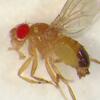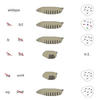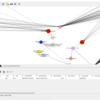Yanhui Hu, Aram Comjean, Jonathan Rodiger, Yifang Liu, Yue Gao, Verena Chung, Jonathan Zirin, Norbert Perrimon, and Stephanie E Mohr. 2020. “FlyRNAi.org-the database of the Drosophila RNAi screening center and transgenic RNAi project: 2021 update.” Nucleic Acids Res.Abstract
The FlyRNAi database at the Drosophila RNAi Screening Center and Transgenic RNAi Project (DRSC/TRiP) provides a suite of online resources that facilitate functional genomics studies with a special emphasis on Drosophila melanogaster. Currently, the database provides: gene-centric resources that facilitate ortholog mapping and mining of information about orthologs in common genetic model species; reagent-centric resources that help researchers identify RNAi and CRISPR sgRNA reagents or designs; and data-centric resources that facilitate visualization and mining of transcriptomics data, protein modification data, protein interactions, and more. Here, we discuss updated and new features that help biological and biomedical researchers efficiently identify, visualize, analyze, and integrate information and data for Drosophila and other species. Together, these resources facilitate multiple steps in functional genomics workflows, from building gene and reagent lists to management, analysis, and integration of data.





